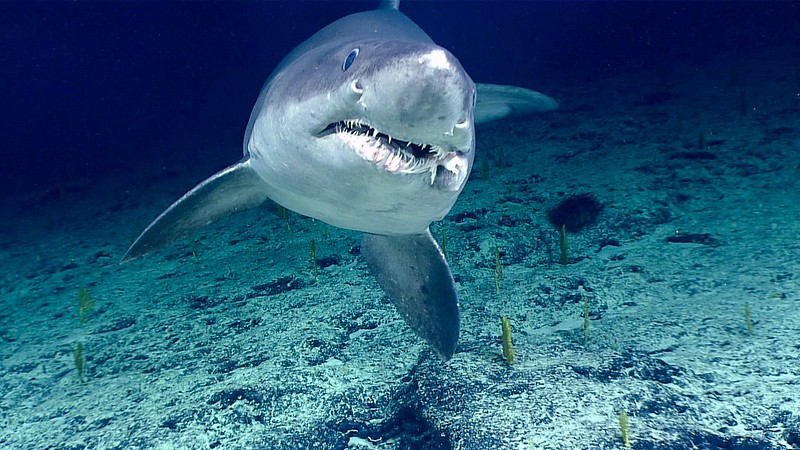As researchers discover more species of warm-blooded shark, they fear these predators will go the way of the megalodon in an increasingly hot planet.
Researchers have discovered anatomical markers which suggest that smalltooth sand tiger sharks are warm-blooded.
The study just published in Biology Letters reveals indications that this ancient species of living shark is a regional endotherm (it can conserve metabolically derived heat). Birds and mammals are endotherms, but most fish and invertebrates are ectotherms (cold-blooded and rely on external heat sources).
“We think this is an important finding, because if sand tiger sharks have regional endothermy then it’s likely there are several other sharks out there that are also warm-bodied,” explained study co-author Dr Nicholas Payne.
Until recently, scientists believed that warm-bloodedness was confined to less than 1pc of shark species, and mainly apex predators such as the great white and the extinct megalodon.
However, the same team published research in July which showed that plankton-eating basking sharks exhibit features of regional endothermy.
This latest study, led by researchers at Trinity College Dublin, uncovers the curious case of warm-bloodedness in a bottom-dwelling (an ambush predator that lives near the sea floor) smalltooth sand tiger shark.

A smalltooth sand tiger shark. Image: NOAA Office of Ocean Exploration and Research/Flickr (CC BY-SA 2.0 DEED)
The team, which includes researchers from universities in Pretoria, Zurich and Swansea, the Smithsonian Institute and University College Dublin, was able to examine a female of the species that had washed up on the east coast of Ireland earlier this year, along with other sharks that washed up in the UK.
Scientists have theorised that warm muscles make fish and sharks more powerful and athletic, which would help explain the success of predators like the great white. Great tuna fish are also regional endotherms.
However, as noted in this study: “[Research] suggests regional endothermy tends to be associated with higher extinction risk”.
These latest findings raise questions about the purpose of warm-bloodedness in sharks and fish and when it evolved. The evolution of the smalltooth sand tiger species is said to have diverged from the megalodon at least 20m years ago.
‘Big-toothed glorious shark’
The Carcharocles megalodon (whose name means big-toothed glorious shark) was the largest shark to have ever lived. It weighed in at about 50 tons and could grow up to 60 ft long (about three times the length of a modern great white). It is believed to have been warm-blooded and went extinct about 3.6m years ago.
“Being warm is more expensive, with RE [regional endothermy] thought to be part of the Meg’s extinction,” wrote Payne on X.
The demise of the megalodon points to the potential dangers for modern warm-blooded sharks in a time of global heating.
The climate crisis is causing major impacts on the world’s oceans, with nearly 30pc suffering from record-breaking marine heatwaves in 2023. The heating causes increased acidification and destroys corals and other microorganisms, leading to inhospitable environments and having cascading adverse effects on the wider ecosystem.
“We believe changing environments in the deep past was a major contributor to the megalodon’s extinction, as we think it could no longer meet the energetic demands of being a large regional endotherm,” explained study lead author Dr Haley Dolton.
“We know the seas are warming at alarming rates again now and the smalltooth sand tiger that washed up in Ireland was the first one seen in these waters. That implies its range has shifted, potentially due to warming waters, so a few alarm bells are ringing.”
10 things you need to know direct to your inbox every weekday. Sign up for the Daily Brief, Silicon Republic’s digest of essential sci-tech news.

